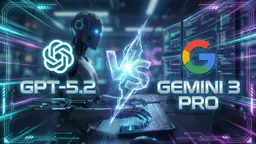Introduction to NotebookLM
NotebookLM is an innovative AI-powered research assistant developed by Google, designed to revolutionize the way users take notes and synthesize information. Utilizing the advanced capabilities of Google's Gemini 1.5 Pro model, NotebookLM allows users to upload their documents, transforming them into a personalized AI expert who can summarize, analyze, and generate insights based on the provided material.
One of its standout features is source-grounding, which enables the AI to respond with contextually relevant information while providing citations from the original documents. This ensures users can trust the accuracy of the insights generated. Additionally, NotebookLM offers functionalities such as generating summaries, answering specific questions, and even brainstorming creative ideas.
Recently, the platform introduced an "Audio Overview" feature, allowing users to listen to AI-generated discussions about their sources, further enhancing the learning experience. With a commitment to user privacy, NotebookLM ensures that personal data is not used to train the AI, making it a valuable tool for students, researchers, and professionals alike.

Use Cases of NotebookLM
Here are some key use cases for Google's NotebookLM AI research assistant:
- Academic Research: Students and researchers can upload academic papers and sources to NotebookLM, which then acts as an AI research assistant. It can summarize key points, answer specific questions about the material, and even generate study guides or literature reviews grounded in the uploaded sources.
- Business Intelligence: Professionals can use NotebookLM to analyze industry reports, market research, and internal documents. The AI can extract insights, compare data across sources, and generate executive summaries - all while maintaining citations to the original materials.
- Content Creation: Writers and content creators can leverage NotebookLM to organize research, generate outlines, and even produce first drafts of articles or scripts. The AI-generated audio feature can turn research into podcast-style conversations for easier consumption.
- Legal Research: Lawyers can upload case files, statutes, and legal precedents to NotebookLM. The AI can then assist in case preparation by finding relevant citations, summarizing key legal points, and even suggesting potential arguments based on the uploaded materials.
- Product Development: Teams can use NotebookLM to consolidate market research, user feedback, and technical specifications. The AI can help identify trends, summarize user needs, and generate product requirement documents grounded in the uploaded sources.
NotebookLM's ability to become an instant expert on uploaded materials makes it a versatile tool across many professional and academic domains.
How to Access NotebookLM
Step 1: Visit the NotebookLM Website
Open your preferred web browser (such as Google Chrome, Firefox, or Microsoft Edge) and navigate to the NotebookLM website. This is the gateway to accessing the AI-powered research assistant.
Step 2: Sign In to Your Google Account
If prompted, sign in using your Google account credentials. NotebookLM requires you to have a Google account to ensure personalized access to your documents and projects.
Step 3: Explore the Welcome Page
Once logged in, you will be greeted with a Welcome page that introduces you to NotebookLM's features and functionalities. Take a moment to familiarize yourself with the layout and options available.
Step 4: Create Your First Notebook
Click on the option to create a new notebook. You will be prompted to name your notebook, which helps you organize your projects effectively.
Step 5: Upload Your Sources
After naming your notebook, you can start adding sources. Click the "Add Source" button to upload documents from your Google Drive, PDFs, text files, or even URLs. This is crucial as NotebookLM will use these sources to generate insights.
Step 6: Start Using NotebookLM
With your sources uploaded, you can begin interacting with NotebookLM. Ask questions about the content, generate summaries, or explore ideas based on your uploaded materials.
By following these steps, you can easily access and utilize NotebookLM for your research and note-taking needs.
How to Use NotebookLM
Step 1: Access NotebookLM
Visit the NotebookLM website and sign in with your Google account. This is your gateway to a powerful AI research assistant.
Step 2: Create a New Notebook
On the homepage, click on "New Notebook." This allows you to organize your research in a dedicated space.
Step 3: Upload Sources
Click the "Add Source" button to upload documents, Google Docs, PDFs, or even web URLs. This feature lets NotebookLM analyze the content and generate useful insights based on the material you provide.
Step 4: Generate Summaries
After uploading, NotebookLM automatically generates a summary of the content. This helps you grasp the main ideas quickly.
Step 5: Ask Questions
You can pose specific questions about your sources. This feature allows NotebookLM to provide detailed answers grounded in the uploaded material.
Step 6: Request Additional Formats
Beyond summaries, you can ask NotebookLM to create study guides, timelines, or FAQs to further organize your information.
Step 7: Share Your Notebook
Finally, share your notebook with collaborators by clicking the "Share" icon. You can control whether they can view or edit the content.
By following these steps, you can efficiently utilize NotebookLM to enhance your research and note-taking experience.
How to Create an Account on NotebookLM
Creating an account on NotebookLM is a straightforward process. Follow these steps to get started:
Step 1: Visit the NotebookLM Website
Go to the NotebookLM website in your preferred web browser. This is the official platform where you can sign up for an account.
Step 2: Click on the "Try NotebookLM" Button
Look for the button labeled "Try NotebookLM" on the homepage and click it. This will initiate the sign-up process.
Step 3: Sign in with Your Google Account
You will be prompted to sign in using your Google account. If you don't have one, you'll need to create a Google account first. Follow the on-screen instructions to log in.
Step 4: Accept Terms and Conditions
After signing in, review any terms and conditions presented to you. Make sure to read them carefully and accept them to proceed.
Step 5: Set Up Your Notebook
Once logged in, you can start creating your first notebook. Click on "New Notebook" and follow the prompts to name your notebook and add your first sources.
By following these steps, you'll successfully create an account on NotebookLM and be ready to organize your research efficiently!
Tips for Using NotebookLM
- Ground Your Sources: Always upload relevant documents, Google Docs, PDFs, and URLs to ensure NotebookLM has the context it needs to assist you effectively. This grounding allows it to provide more accurate summaries and insights.
- Utilize Summarization Features: After uploading your sources, leverage NotebookLM's automatic summarization by asking specific questions about key topics. This helps you quickly grasp essential information without sifting through all materials.
- Ask Targeted Questions: For best results, frame your questions clearly and specifically. Instead of asking broad questions, focus on particular aspects of your sources to elicit detailed responses.
- Collaborate in Real-Time: Take advantage of the collaborative features by sharing your notebooks with colleagues. Real-time editing allows for seamless teamwork and idea exchange.
- Explore Sample Notebooks: Before creating your own, check out sample notebooks to understand effective organization and note-taking strategies, which can inspire how you structure your own content.
By following these tips, you can maximize your experience with NotebookLM, turning it into a powerful research assistant tailored to your needs.








